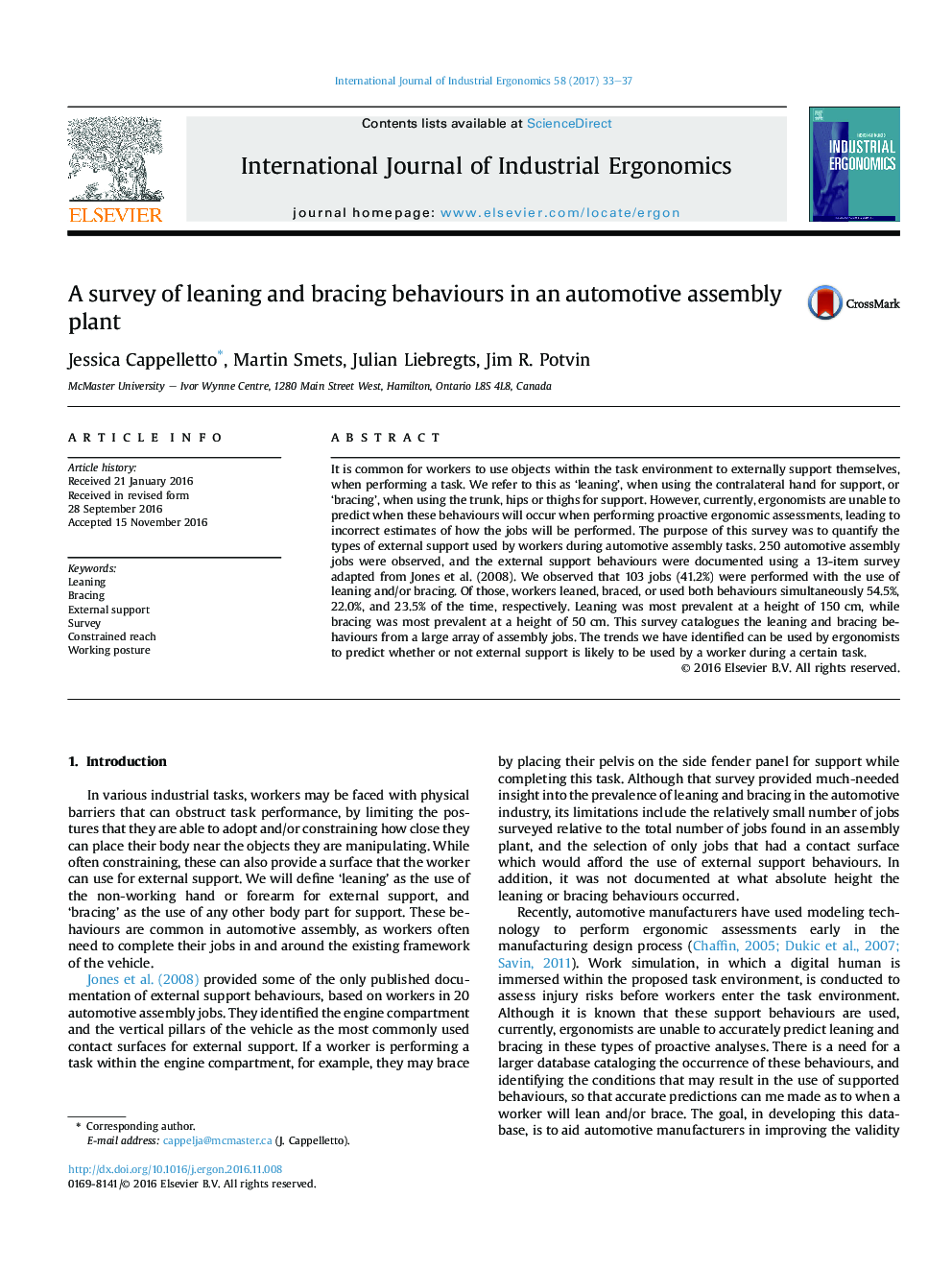| Article ID | Journal | Published Year | Pages | File Type |
|---|---|---|---|---|
| 5123718 | International Journal of Industrial Ergonomics | 2017 | 5 Pages |
â¢41.2% of jobs in the plant utilized a method of external support.â¢Leaning mostly occurred on higher surfaces - at the eye height of an average female.â¢Bracing mostly occurred on lower surfaces - at the knee height of an average female.
It is common for workers to use objects within the task environment to externally support themselves, when performing a task. We refer to this as 'leaning', when using the contralateral hand for support, or 'bracing', when using the trunk, hips or thighs for support. However, currently, ergonomists are unable to predict when these behaviours will occur when performing proactive ergonomic assessments, leading to incorrect estimates of how the jobs will be performed. The purpose of this survey was to quantify the types of external support used by workers during automotive assembly tasks. 250 automotive assembly jobs were observed, and the external support behaviours were documented using a 13-item survey adapted from Jones et al. (2008). We observed that 103 jobs (41.2%) were performed with the use of leaning and/or bracing. Of those, workers leaned, braced, or used both behaviours simultaneously 54.5%, 22.0%, and 23.5% of the time, respectively. Leaning was most prevalent at a height of 150 cm, while bracing was most prevalent at a height of 50 cm. This survey catalogues the leaning and bracing behaviours from a large array of assembly jobs. The trends we have identified can be used by ergonomists to predict whether or not external support is likely to be used by a worker during a certain task.
